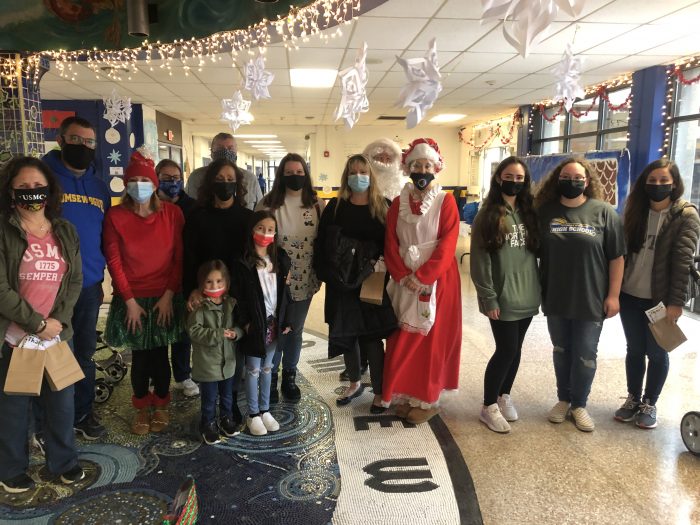These days, we are constantly reminded about how this holiday season is going to be sparse; but here at Comsewogue, students won’t be lacking.
When I first got into teaching, I was worried about not being welcomed by the students since I was an older teacher. Fortunately, the students at Comsewogue High School and the middle school enthusiastically welcome me on a daily basis.
They bring me treats and do amazing things —often these things go unrecognized (and that is fine with them since it’s not the reason they do it). On the other hand, I feel it is necessary to highlight positive actions.
One of those amazing things I see is how some “typical” students get involved and help out our students with disabilities. As a special education teacher, I see so much value when students get actively involved and help our special education classes.

Our students planned and executed one of the most incredible projects for their Eagle Scouts organization. They built several raised garden beds and picnic tables (taking special consideration to ensure they would be accessible to students in a wheelchair). These pieces are in our courtyard and are used often by our students.
I made it known to other students how they too can be of service to people in the special needs community.
“Come visit our classes and see where you can help,” I said, and they did! One young lady (an aspiring baked goods aficionado) came to our class and worked with the students to create some delicious and beautiful cupcakes. We have since been visited by student artists, musicians, therapy dogs, and all-around friendly folks ready, willing to lend a hand.
Recently, some of our superstar athletes invited some special athletes to join them at their awards dinner. These young helpers are much more inspirational to their special needs peers. Often these helper-leaders will tell me how rewarding it is to assist, and how great they feel afterward.
For the past two years, I’ve thought about how positive an impact these young leaders have within our school. I would like to encourage this type of leadership even more. I would also like to encourage them to explore teaching as a possible career.
This spring, we are planning on taking some of them to an outstanding leadership seminar where I was impressed by a quote I saw: “A child with disabilities often spends hours being taught how to interact with others… But why don’t we spend time teaching those without disabilities how to interact with them?”
This year our country has endured unbelievable hardship. Because of this, the need to encourage our wonderful student-leaders has increased even more. For their own birthdays, students Alyssa Morturano and Ashley Doxey raised money and donated it all to the Special Olympics.
One student, Kylie Schlosser helps students with disabilities through an organization called Great Strides, where she connects students with equine therapy, giving them a chance to ride and learn about horses.
Recently students helped with a massive clean-up activity at a summer camp for special needs children. Within school, they do fundraisers, assist with classes, and do work around our special garden.

Our monthly Athletics for All events are starting up again. The kindness continues to spread district wide. In addition to all of this, many of these same students perform outstanding academically, athletically, and artistically.
In our small community of Port Jefferson Station, many need to hold down difficult and time-consuming jobs. These jobs are often customer service-related, and I have personally witnessed some of them keep a smile on their face even while being treated with insensitivity.
“It is students like this that make this a great district; it’s the reason we get up and go to work every day with a smile on our faces,” said Superintendent Jennifer Quinn.
Perhaps this holiday season we can all be encouraged and inspired by these students and give the “stuff” that really counts — give to others in need from the heart.
Instead of thinking about all the “goods” we desire, buying and getting, let’s think about the gifts we receive from the giving.
Andrew Harris is a teacher with the Comsewogue School District.

























 He spent his teenage years cultivating life-long friendships, “having way too much fun,” and dreaming of the day he’d join the armed forces. At 17, he enlisted in the Army and at 20 he joined the Navy.
He spent his teenage years cultivating life-long friendships, “having way too much fun,” and dreaming of the day he’d join the armed forces. At 17, he enlisted in the Army and at 20 he joined the Navy.











